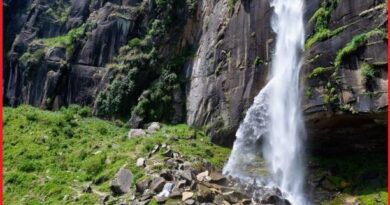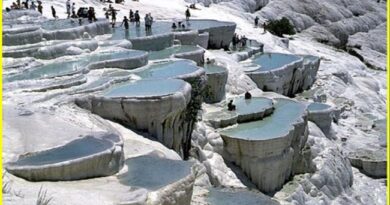High Altitude Haven: Trekking Adventure in Warwan Valley
Warwan Valley
The Warwan Valley is a picturesque valley located in the Kishtwar district of Jammu and Kashmir, India. It’s known for its stunning natural beauty, including lush green meadows, crystal-clear streams, and towering snow-capped peaks. The valley is surrounded by the Himalayan ranges, making it a popular destination for nature lovers, trekkers, and adventure enthusiasts.
Warwan Valley remains relatively untouched and pristine, offering a serene environment away from the hustle and bustle of city life. It’s also home to several remote villages inhabited by the Gujjar and Bakarwal communities, who are primarily pastoralists. The valley is accessible via trekking routes, with the famous Warwan Valley trek attracting trekkers worldwide. The trek usually starts from the town of Inshan and passes through breathtaking landscapes, including dense forests, alpine meadows, and high mountain passes.
Due to its remote location and challenging terrain, Warwan Valley Kashmir offers a sense of isolation and tranquility, making it an ideal destination for those seeking an off-the-beaten-path adventure in the Himalayas. However, it’s important to note that access to the valley may be restricted at times due to security concerns, so it’s advisable to check the current situation before planning a trip.
1. Warwan Valley weather
The weather in Warwan Valley Kashmir, like much of the Kashmir region, is influenced by its high altitude and mountainous terrain. Here’s a general overview of the weather throughout the year:
Spring (March to May)
Spring brings a gradual increase in temperature and the onset of melting snow. The weather during this time is generally pleasant, with daytime temperatures ranging from mild to cool. It’s a popular time for trekking and exploring the valley as the landscape starts to come alive with blooming flowers and rejuvenated vegetation.
Summer (June to August)
Summer in Warwan Valley is relatively short but can still be quite warm during the daytime, especially in lower elevations. Daytime temperatures typically range from mild to moderately warm, making it an ideal time for outdoor activities like trekking and camping. However, nights can still be cool, especially in higher altitudes.
Also, read- Exploring Paradise-‘The Kashmir Great Lakes Trek’
Autumn (September to November)
Autumn is characterized by cooler temperatures and the gradual transition to winter. The weather remains pleasant during the daytime, with clear skies and crisp air. This season offers stunning views of the valley adorned with vibrant autumn colors, making it a favorite among photographers and nature enthusiasts.
Winter (December to February)
Winter in Warwan Valley is harsh, with temperatures dropping significantly, especially at higher altitudes. Heavy snowfall is common during this time, transforming the valley into a winter wonderland. The valley may receive heavy snowfall, which can lead to road closures and restricted access. Travel during this time can be challenging, but it offers a unique experience for those interested in winter sports like skiing and snowboarding.
It’s important to note that weather conditions in mountainous regions can be unpredictable, so it’s advisable to check the weather forecast before planning a trip to Warwan Valley, especially during the winter months. Additionally, due to its remote location, access to the valley may be limited during periods of heavy snowfall or inclement weather.

2. Warwan Valley Trek
The Warwan Valley trek is a spectacular trekking route, renowned for its stunning natural beauty, remote landscapes, and challenging terrain, making it a favorite among experienced trekkers seeking adventure in the Himalayas.
Duration: The trek typically takes around 8 to 10 days to complete, covering a distance of approximately 70 to 80 kilometers round trip, depending on the specific route and starting point.
Starting Point: The trek often begins from the town of Inshan, which serves as a gateway to the Warwan Valley. Inshan is accessible by road from Kishtwar town, which is the nearest major town with transportation facilities.
Route: The trekking route passes through breathtaking landscapes, including dense forests, alpine meadows, gushing streams, and high mountain passes. Trekkers traverse rugged terrain, steep ascents, and rocky trails, offering both physical challenges and rewarding vistas along the way.
Highlights: Some of the highlights of the Warwan Valley trek include:
- Majestic views of snow-capped peaks, including Nun Kun massif.
- Crossing high mountain passes like Margan Top and Marwah Pass, offers panoramic views of the surrounding valleys and mountains.
- Camping beside pristine alpine lakes such as Sukhnai and Warwan.
- Encountering the local Gujjar and Bakarwal communities, known for their hospitality and traditional way of life.
- Exploring remote villages nestled in the valley, providing insight into the cultural heritage of the region.
Difficulty: The Warwan Valley trek is considered challenging due to its remote location, high altitude, and rugged terrain. Trekkers should have prior trekking experience and be in good physical condition to undertake this adventure. Altitude sickness can also be a concern, so acclimatization is crucial.
Best Time to Trek: The best time to undertake the Warwan Valley trek is during the summer months, from June to September, when the weather is relatively stable, and the trails are accessible. However, it’s essential to be prepared for unpredictable weather conditions, especially in high-altitude regions.
Permits and Regulations: Since the Warwan Valley is located in a sensitive border region, trekkers may require permits from the local authorities. It’s advisable to check the current regulations and obtain necessary permits before embarking on the trek.
3. India Hikes Warwan Valley
4. Srinagar to Warwan Valley Distance
The distance between Srinagar and Warwan Valley is approximately 260 to 280 kilometers by road, depending on the specific route taken. However, the actual travel distance and time can vary based on road conditions, weather, and the mode of transportation. The journey from Srinagar to Warwan Valley typically involves traveling through mountainous terrain, including winding roads and mountain passes. It can take anywhere from 12 to 18 hours by road, depending on factors such as traffic, weather conditions, and the condition of the roads.
Due to the remote and rugged nature of the region, accessing Warwan Valley may require multiple modes of transportation, including taxis, buses, and possibly even trekking for the last leg of the journey, depending on road accessibility.
5. Pahalgam to Warwan Valley Distance
The distance between Pahalgam and Warwan Valley in Jammu and Kashmir, India, is approximately 130 to 150 kilometers road, depending on the specific route taken. Traveling from Pahalgam to Warwan Valley typically involves navigating through mountainous terrain, including winding roads and passes. The journey can take around 7 to 10 hours by road, depending on factors such as road conditions, weather, and the mode of transportation.
Given the remote and rugged nature of the region, accessing Valley may require multiple modes of transportation, including taxis, buses, and possibly trekking for the last leg of the journey, depending on road accessibility. As with any journey in mountainous regions, it’s essential to plan carefully, considering factors such as weather conditions, road closures, and transportation availability, especially during the winter months when certain mountain passes may be closed due to snowfall.



